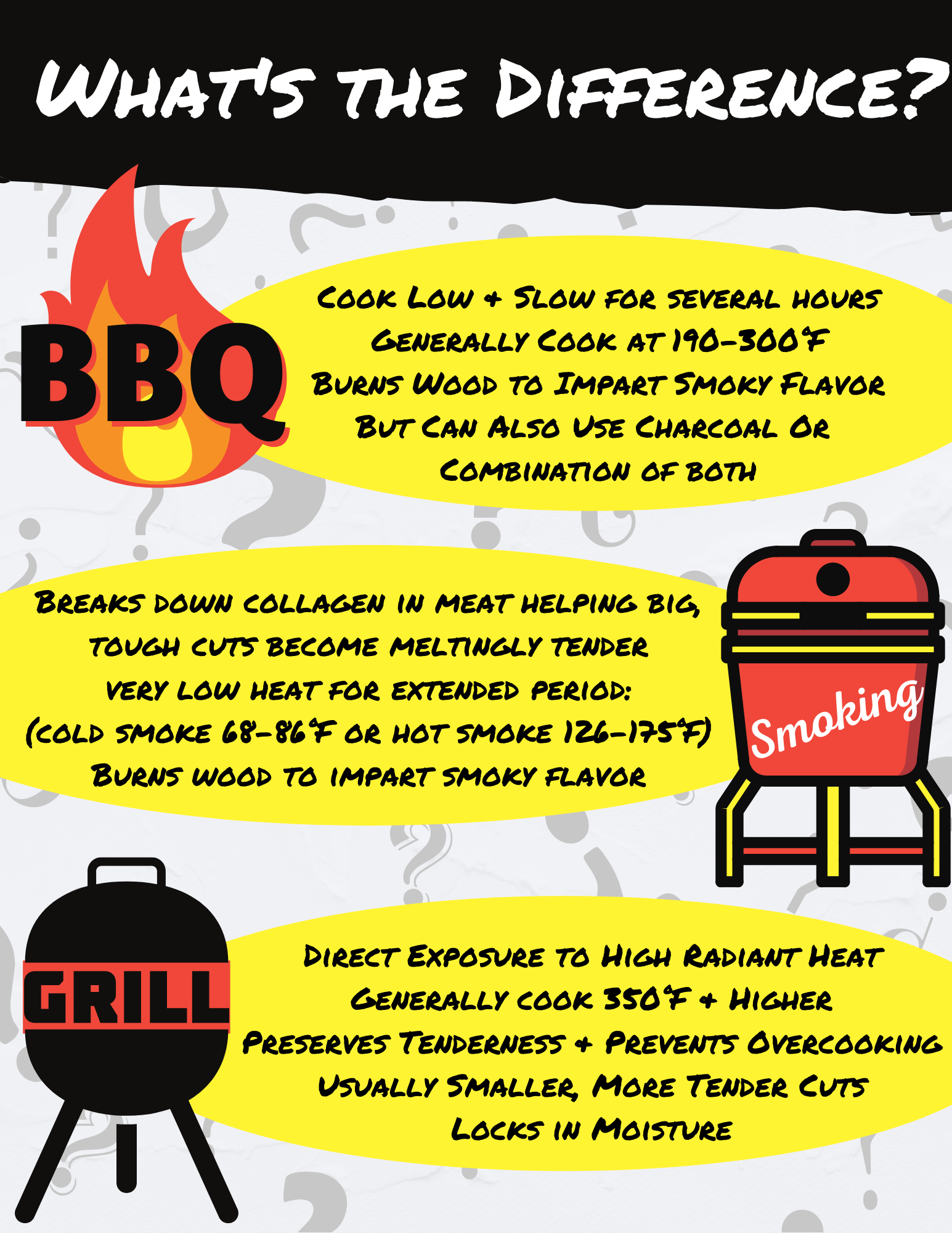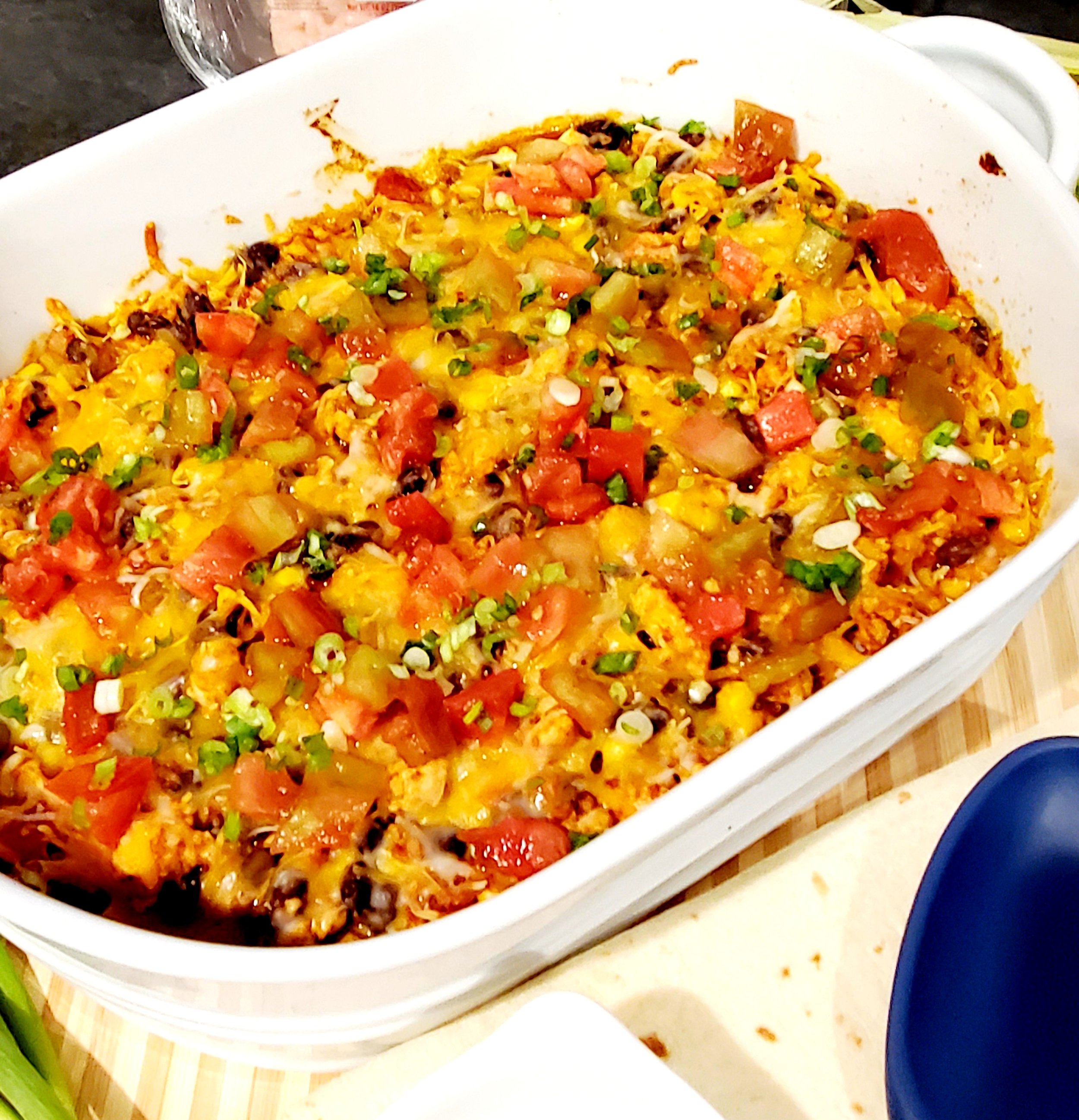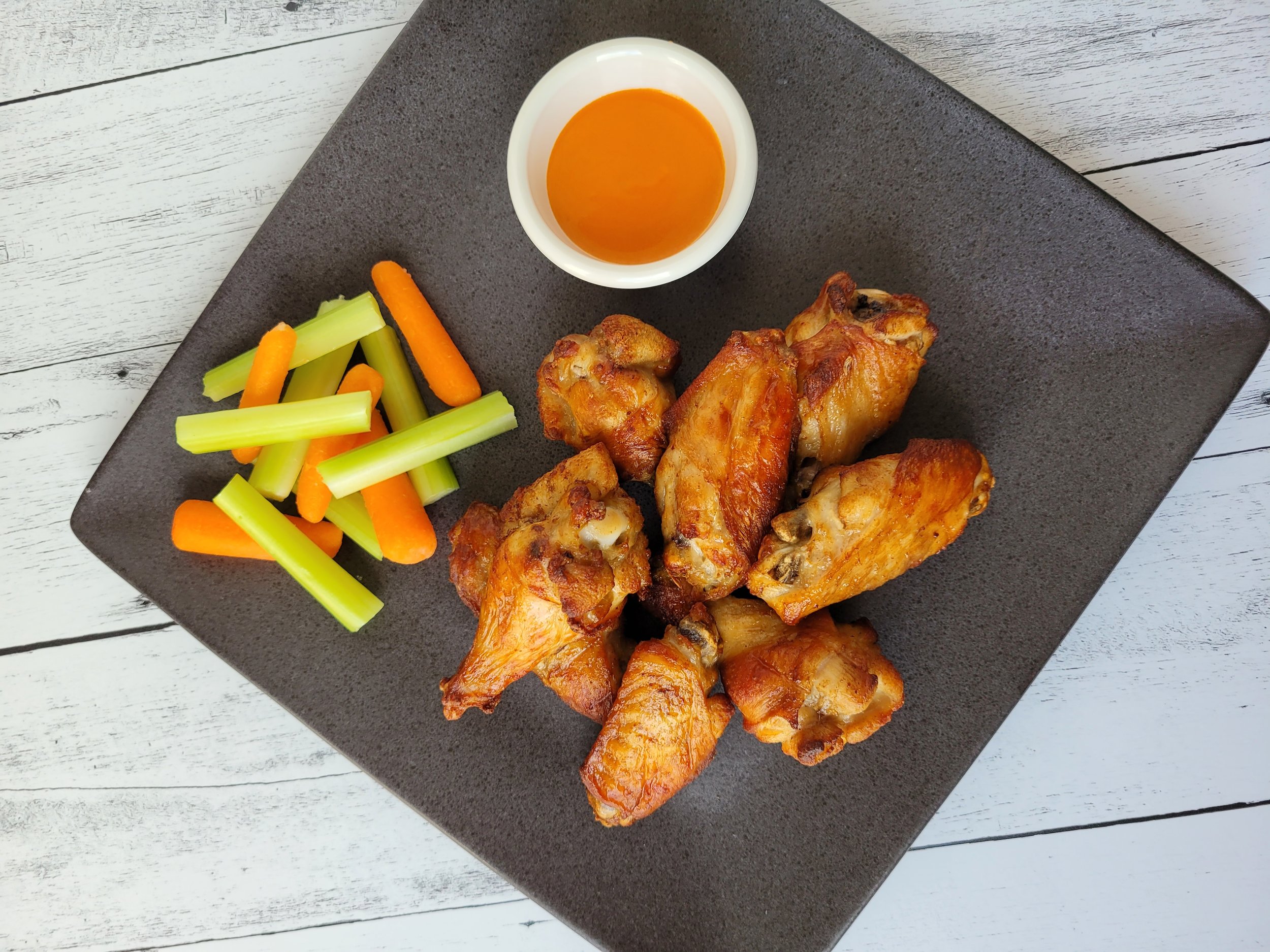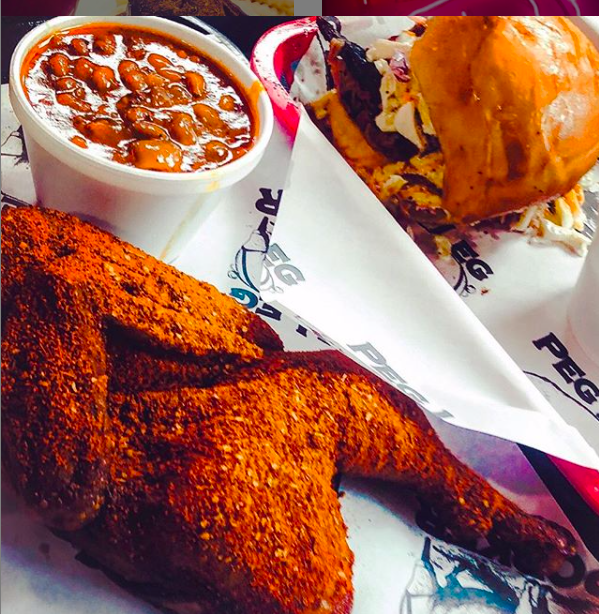
This time of the year, everyone gets the itch to cook over hot coals, with burning sticks of wood or wood pellets, or smoldering, smoking wood chips, especially when 7 out of 10 American adults own a grill or smoker. You’ll undoubtedly hear the terms barbecuing, grilling and smoking used interchangeably in conversations about outdoor cooking. Do you know the difference and when to use each method? Or even which apparatus to use for which style of cooking? Hopefully, we’ll help clear any confusion, and you’ll have one leg up at the next neighborhood cook-out!
The biggest difference between these 3 methods is the heat level and amount of time it’s cooked. Essentially, grilling means cooking over fire, in a hot, fast method. Barbecuing and smoking cook low and slow. One thing all of the methods have in common is the ability to cook all of them using your charcoal or gas grill. You can also used a dedicated smoker for barbecuing or smoking, but they don’t generally use open flames where the food is cooked, so grilling wouldn’t be an option.
Grilling
This method is probably what most people use when cooking outdoors at home, especially when cooking chicken. Grilling is when food is exposed to a high radiant heat, normally at temperatures of 350°F or higher. Because of the high heat needed, charcoal or propane gas are the main supplies of heat in grilling. The high temperatures and radiant heat caramelize the outside of the food, locking in moisture. Grilling is usually used for smaller, tender cuts of meat that cook quickly preserving tenderness and helping to prevent overcooking.
Barbecuing
This one is often misused as a general term for cooking on a grill, but in fact barbecuing is where you cook large cuts of meat very low, usually between 190°F and 300°F for several hours. The trick and key to learning to barbecue correctly is maintaining the temperature for the duration of the cooking time. Thankfully, there are a variety of tools and grills/smokers that help take care of that for you or as easy as adjusting a knob on your gas grill. If you aren’t lucky enough to have a tool to help with that, you’ll just need to replenish coals regularly as needed, or monitor temperatures to adjust accordingly. Remember this is not a direct heat method and you’d need to have the coals/flame over to one side of your grill so that it cooks more slowly. You’ll also want to add some smoke to the mix so wood chips or chunks help create the smoke to add that element to your food.
Smoking
This method uses the smoke created from smoldering chips or chunks of wood to cook and adds the smoky flavor to the food, using even lower temps than barbecuing. The time for cooking normally increases too because of the lower temperatures, and can range anywhere from an hour to a week. It’s not uncommon to smoke meat for over 24 hours. Smoking breaks down the collagen in meat helping the bigger, tougher cuts to become meltingly tender, and the patience required to smoke meat is usually rewarded with a beautiful smoke ring. The ideal temperature for smoking is between 125°F and 175°F., but a cold smoke method can also be used for already cured or cooked meat to impart smoke flavor. Cold smoking is done with temps between 68°F-86°F.
[Caution: Learning to smoke chicken is not for the novice! Careful monitoring of the time the chicken stays in the temperature danger zone is extremely important because of potential bacterial growth between 42°F & 135°F.]


